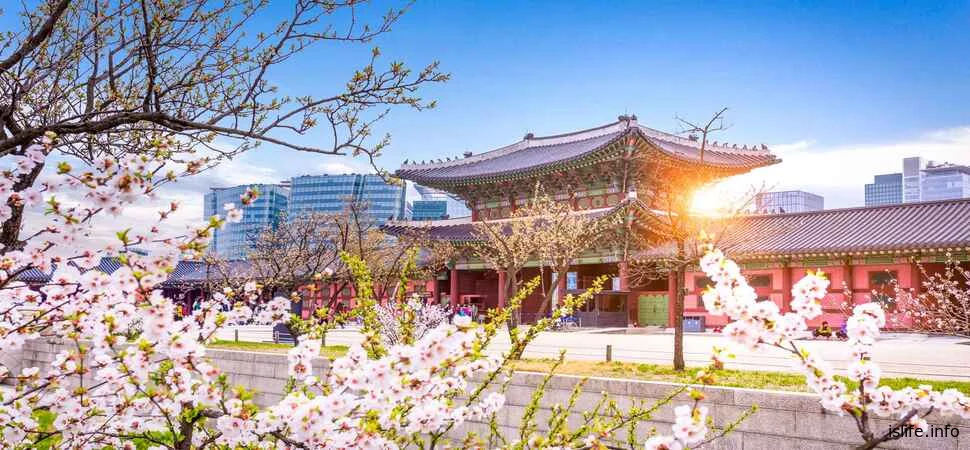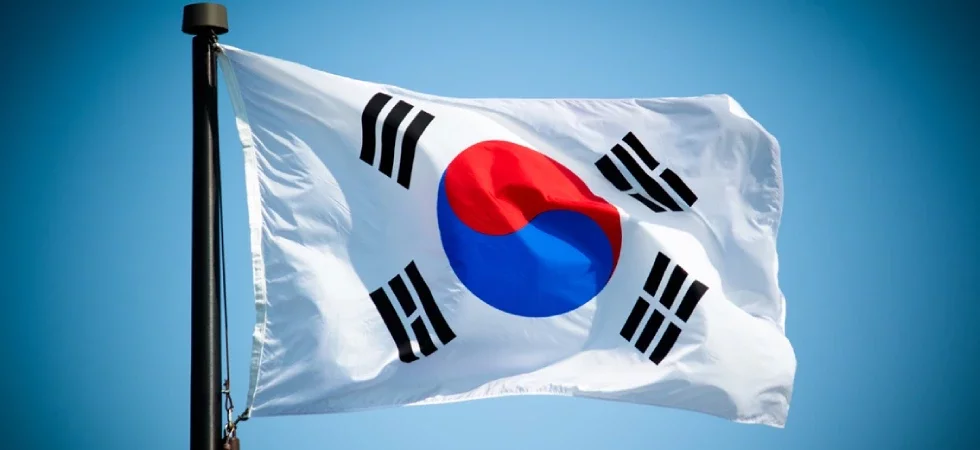South Korea's economy is an advanced mixed economy, ranking 4th in Asia and 12th in the world in terms of nominal GDP (US$1.87 trillion in 2024). The country has shown rapid development from an underdeveloped to a high-income economy, which is referred to as the “Miracle on the Han River”. This has allowed South Korea to join the OECD and G20, and to be included in the Next Eleven group as a potential future economic leader.
High investment in education and science (4.93% of GDP on research and development) has played a key role in economic growth. An export-oriented strategy has made South Korea the ninth largest exporter and importer in the world (2022). International financial organizations note the economy's resilience to crises due to low government debt and high financial reserves. Unlike many developed countries, South Korea avoided recession during the 2008 global crisis and achieved 6.2% GDP growth in 2010.
↑ South Korea's economy in the second half of the 20th century
The foundation for South Korea's economic recovery was laid by General Park Chung-hee after the 1961 coup. His government implemented a state-led industrial policy, nationalized the financial system, and introduced five-year economic plans. A strict protectionist approach restricted the importation of foreign products except for essential raw materials. The government provided significant support to large family-owned conglomerates, or chaebols, such as Samsung, Hyundai, and LG, offering tax breaks, cheap credit, and legal advantages to stimulate industrial growth. These corporations became the backbone of the economy, turning South Korea into a major player in global manufacturing and exports.
By the 1980s, South Korea shifted to a more market-oriented approach, adopting conservative fiscal policies to control inflation and encourage foreign investment and competition. Heavy investment in public infrastructure such as roads and telecommunications helped balance economic disparities between rural and urban areas. This period saw strong economic growth, with GDP increasing at an average annual rate of more than 9%. The trade surplus strengthened the economy by reducing dependence on foreign debt. Despite periodic setbacks, South Korea avoided recession during global downturns and maintained a strong financial position.
<<Место для картинки №2>>
↑ 1990s and 2000s
In the early 1990s, South Korea experienced sustained economic growth due to high private consumption and increasing GDP. However, the 1997 Asian financial crisis severely affected the country when speculative attacks on Asian currencies led to a sharp depreciation of the Korean won. The crisis was exacerbated by a large number of non-performing loans at Korean merchant banks, prompting the International Monetary Fund (IMF) to approve a $21 billion loan as part of a $58.4 billion economic rescue package.
To stabilize the economy, the South Korean government closed one-third of merchant banks in early 1998. Despite these measures, the economy contracted significantly, with an average quarterly decline of -6.65% during the year. The crisis also led to the disbanding of the chaebolized Daewoo company due to excessive debts: its engine division was acquired by General Motors and its heavy vehicle division was sold to India's Tata Group.
Economic recovery began in 1999, thanks to flexible labor market policies, debt restructuring, and alternative sources of financing. By the first quarter of the year, GDP growth had recovered to 5.4% and annual growth rose to 10.5 percent, helped by deflationary pressures on the currency. In December 1999, President Kim Dae-jung officially declared the end of the financial crisis, marking South Korea's rapid recovery from one of the worst economic downturns.
Following the 1997 Asian financial crisis, South Korea under President Kim Dae-jung transitioned from a state-driven economy to a market-oriented model. This transition led to high growth rates of 10.8 percent in 1999 and 9.2% in 2000, but the global slowdown and stalled reforms reduced growth to 3.3% in 2001.
in 2001.
Despite setbacks, South Korea stabilized, maintaining a growth rate of 4-5% since 2003. The Great Recession of 2008 caused a brief downturn and a decline in exports, but prompt stimulus measures and strong domestic demand limited the economic decline to just 0.2 % in 2009. By 2010, South Korea had recovered its growth rate of 6.1 %, helped by increased exports. It is expected to grow at 3.9-4.2% per year through 2030, similar to countries such as Brazil and Russia, which are among the next eleven economies.
↑ South Korea's economy over the past few years

In 2023, South Korea is facing economic challenges due to the growth of China's manufacturing sector, the impact of COVID-19, and declining exports. In January 2023, exports of manufactured goods to China fell 31% and the electronics sector also weakened. Rising inflation, household debt and productivity problems have contributed to economic stagnation.
To counter the downturn, the government launched the Korean New Deal, a $144 billion stimulus plan that focused on health care and green industries. In addition, the New Growth Strategy 4.0 aims to develop semiconductors with artificial intelligence, clean hydrogen, autonomous driving and battery reuse.
Despite economic difficulties, South Korea is still strong in biomedical and AI technology, and its medical industry is projected to grow at more than 6% per year. Experts believe that AI-driven innovations in healthcare could propel South Korea to become a global leader in the biomedical sector.

